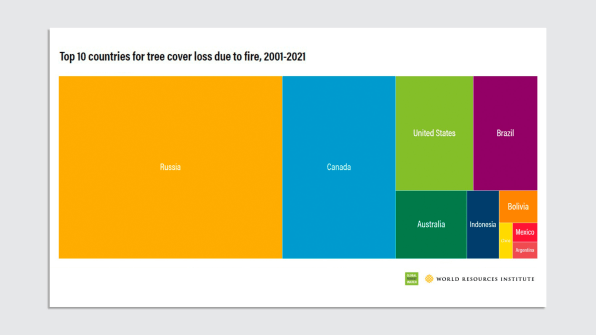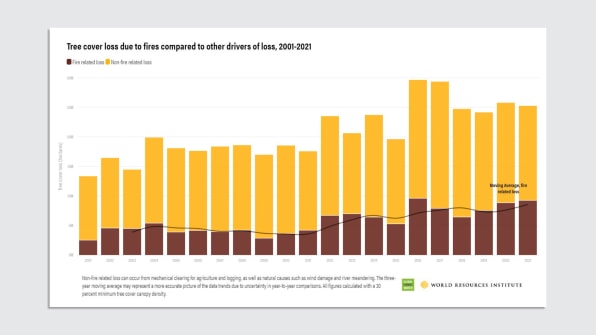- | 10:00 am
Forest fires are burning twice the amount of tree cover they did just 20 years ago
And as those trees burn up, they release carbon emissions that add to climate change and lead to even more fires.

If it seems like forest fires are getting much worse, that’s because they are. The area of trees lost to fires each year is now twice as large as it was in the year 2001.
In a new analysis, researchers at Global Forest Watch used satellite images to map out tree loss from fires over the last 20 years. Compared to the beginning of this century, the world is now losing more than 7 million additional acres of tree cover annually, an area roughly the size of Belgium.

The biggest losses are happening in northern forests in Russia and Canada. Fires are natural in Siberia, but the scale has changed: Last year, more than 13 million acres of tree cover burned in Russia, an area more than six times greater than in 2001. Climate change is heating up northern latitudes faster than the rest of the planet, driving the growth in intense fires.
“You’re seeing these areas are drying out more, and they’re having longer fire seasons and more frequent and severe fires,” says James MacCarthy, a GIS analyst at Global Forest Watch. Though many places are naturally adapted to fire, “what’s really concerning is the increase in that frequency and severity,” he says. The analysis focused on stand-replacing fires, the kind that are so intense that most or all of the bigger trees in a forest die.

Fires cause a feedback loop: As climate change makes bigger areas burn, the emissions from those fires add to climate change, leading to even more fires. In 2021, by one estimate, wildfires emitted 1.76 billion tons of carbon last year, or more than twice as much as Germany’s annual emissions. Keeping forests standing is also a key part of fighting climate change, since trees suck up CO2. “One of the best defenses we have against climate change is protecting the forests that we currently have,” MacCarthy says. “I think that their loss makes it difficult for a lot of countries to meet their climate commitments under the Paris agreement.”Governments can do more to help prevent the worst fires, such as by conducting prescribed burns to strategically clear dead trees and other vegetation before a wildfire begins. In the U.S., the new Inflation Reduction Act includes around $5 billion in new funding to fight wildfires, including support to reduce dangerous fuels in national forests. But slowing down climate change is the most critical step. On the current path of emissions, as climate change makes the world hotter and drier, extreme fires could increase 14% globally by 2030, 30% by 2050, and as much as 50% by the end of the century, according to a recent UN report.






































